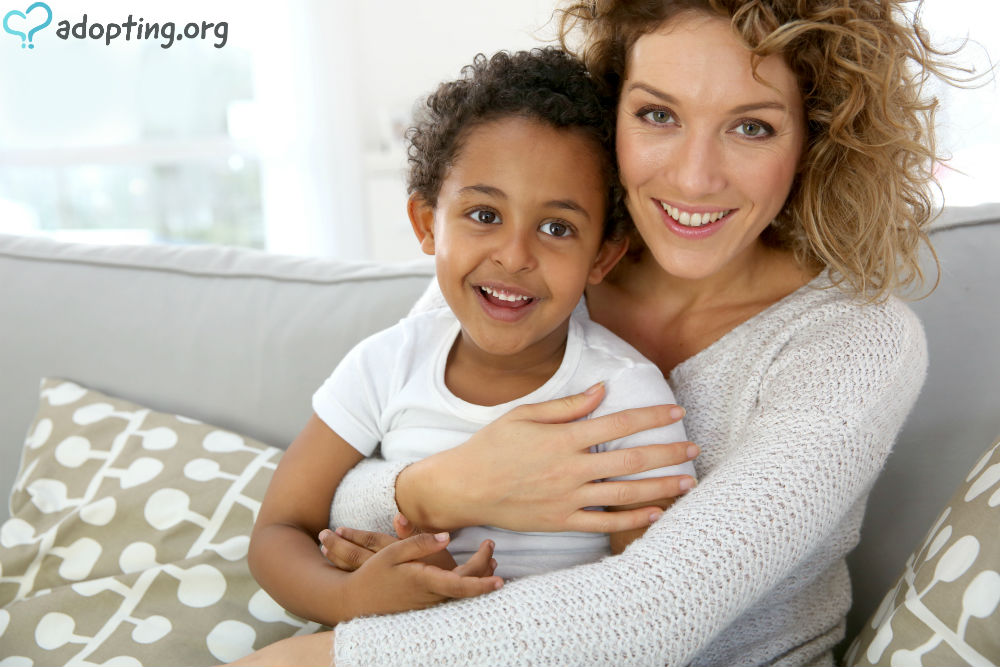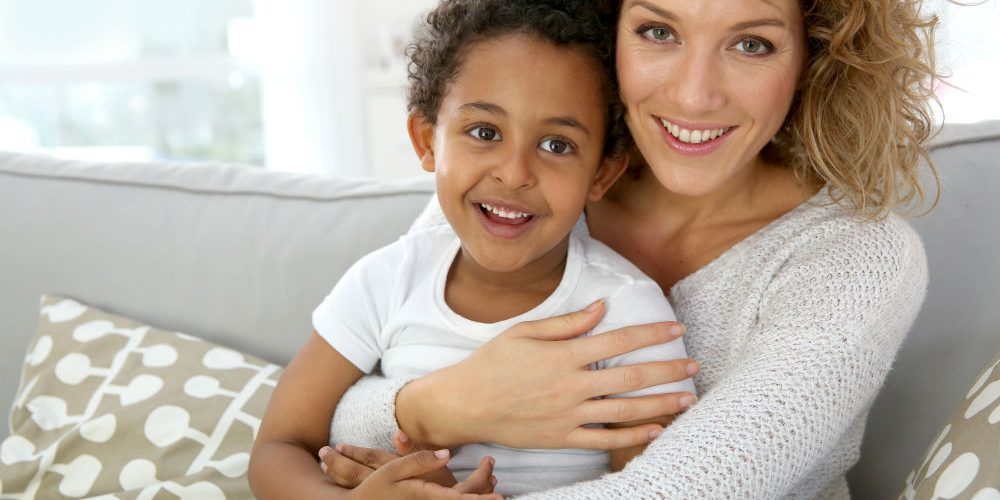
Before we get into the topic too deep, let’s first define what transracial adoption is. Transracial adoption is the adoption of a child that is a different race than that of the adoptive parents. Some other interchangeable terms for a transracial adoption could be biracial, interracial or multicultural adoptions.
There are many things to consider before pursuing any adoption, but there are other things to consider when deciding to pursue a transracial adoption. It could be one of the biggest decisions you make when deciding to pursue adoption. When we were starting the process, the thought of raising a child of a different race didn’t stop us in our tracks. It wasn’t something that scared us. We have several adopted children in our family of all races; we didn’t think twice about adopting and raising a child of another race. We knew we would have the resources available for our child, and we were hoping we would be able to have an open adoption with our child’s birth family.
First, I think you have to ask yourself why. Why do you want to adopt a child from a different race? I believe there are many valid reasons, but I also think people choose it for the wrong reasons. I have heard people say that the cost may be less and the waiting period may be shorter for adopting a child of a different race. While these seem like legitimate reasons, I hope they are not the only reason. If they are, you will be in for a very rude awakening when you are trying to raise the child. Here is a great article that might help you decide if adopting transracially is the best decision for your family.
After you have decided that transracial adoption is the right adoption for you, I believe there are several questions you should ask yourself before continuing to pursue a transracial adoption. First, are you comfortable in your own skin? I mean the color of your skin. I never really realized how much “white privilege” I had before we adopted our biracial son. I had to admit where I was ”lucky” to be white and realize all that I took for granted before I could completely open my heart to the idea of raising someone who did not have those same privileges as we did. I can imagine if the roles were reversed, the question of how do you raise someone of a different color would still be there. I didn’t know what it felt like to be the “outsider” or the minority in any situation.
It is crazy to think that in 2019 we still have to worry about the color of our children’s skin. However, it is true, we do. This is a great three part series article written from a Caucasian perspective about her biracial sister. She shares her personal thoughts and reflection about raising a child of a different race. She is right; there are so many more things to consider than skin tone when adopting a child of another race.
You also have to ask yourself how comfortable you feel when talking about race. Not just talking about it with your immediate family but also with all those around you. Let me tell you, those conversations are not easy, worth it, but not easy. Recently, my son and I were reading a book about Rosa Parks and segregation. To a four-year-old, this kind of behavior just doesn’t make sense, but it was how the world was. He is not that much darker than us but knows he is “different” from us. When we finished reading the book, he said, now people with black skin and people with white skin can be friends. Yes, my son, yes they can!
Talking about race will most likely be a constant in your family if you adopt transracially. It isn’t necessarily a bad thing, but to an extent, you have to be comfortable talking about race with your child, your family, and those around you. At some point, there is a good chance your child will notice and want to talk about why his skin color is not the same as yours. Be prepared. For us, this has simply just been part of our language.
It is not only conversations with your children though, it is conversations with all of those around you. You might get people who stare, who say something, and even get judgment from those in your own family. However, it is none of those people’s business what your family looks like. There may be times you say something to those who are staring at you. And there may be times you just smile. In any event, make sure you are prepared for how you will handle those situations. Of course, there will always be things that are in the heat of the moment but conversations with family or those closest to you, can most likely be planned out.
As your child gets older, he may also want to learn about his culture and heritage. My biggest piece of advice in that regard, let him. Do not feel offended that he wants to know his birth family or birth heritage. He is trying to figure out who he is. Please, please do not stop him from trying to figure it out. It might be painful for you as his parent, to sit back and let him learn about his birth family. It is not something you should be sad about or question. It is nothing you did but rather, something he needs to do to feel that they fit in. He probably has spent a majority of his life trying to fit in or at the very least feel like he fits in. Finding a family that looks like him, might just help him become who he is meant to be.
Another thing to think about is what does the population around your children look like? Will they have someone that looks like them? Will they be the outcast in their sphere of influences? We recently made a big move back to where we grew up. Which meant we were moving from quite a large city to a very small rural town. That also meant a decrease in the diversity surrounding our son. It was a big change, and one we knew we were going to have to offset someplace else. It meant we have to be more intentional about where we spend our time outside of this city, so we have to travel more on the weekends to visit places with diversity. We probably would have done that, had we stayed where we were living, we just have to be more intentional about it now. That means organizing play dates with families of different races and put more effort into how we plan our days. That also meant we thought of those things first. Will this be enough for him? Only time will be able to tell if it is. We will continue to do what we think is right until he is old enough to voice an opinion and express what he needs to feel comfortable in his own skin.
Ok, so now that you finally have thought all these things through, and you are still adopting a child of a different race. Now what? If at all possible, you should have a relationship with the birth family. I know this is not possible in every situation and could be harmful to your child, but if you have the option, I highly suggest it. Thankfully, we have an open adoption with our son’s birth mother and her entire family. So when we have questions about his skin care, hair, personality, culture, or heritage, we know where to go to get our questions answered. If you don’t have a personal connection or the connection needs to be severed for whatever reason, try to get as much information from them as possible before that happens.
Not able to connect with them at all? Learn from others. Take a class. Travel to their country of origin. Find people who are willing to walk alongside you during this process. Maybe they have similar stories to yours; ask them what they did to get to know their child’s ancestry, culture or heritage. My hope is that you already have friends of color, if not, try to find someone. I know for us, our town is small but we have lots of family and friends that are from a different race, so we have the help or advice we need.
Some of the same questionas as an adoption of the same race will arise when adopting transracially since the process is the same. Infant, domestic, international, and foster care adoption are things you must consider when pursuing a transracial adoption. Some of those will bring other issues that need to be addressed. For instance, if you are adopting from the infant-domestic category, you may not have to deal with some of the issues until your child is older and understands skin color. If you are adopting internationally, you may have to deal with those things right away. Or you may have other things you need to educate yourself on, like ethnic foods that your child has been accustomed to. Either way, make sure you chose the right avenue, even if you have decided transracial adoption is right for your family!
Looking back, I should’ve thought about some of these things a little more. For example, how would I handle the skin, the hair, the culture, or the ethnic heritage? Or, how to deal with racism. Of course, I thought about how it would be different; I just didn’t do any more thinking or researching than that. My biggest piece of advice in that regard, think about those things. Have a game plan in place. We are learning as we go, but it would have helped get off to a better start, had we put a little more thought into those things.
There aren’t perfect answers or ways to raise a child born to a transracial family. Luckily, there are great resources available to help you along the way. There are many, many books, documentaries, blogs, articles, etc. to help you along the way. I know it sounds cheesy but have you seen the popular TV show, This Is Us? If you haven’t, it is a great show but grab your kleenex because if you have adopted, it hits really close to home! A wonderful documentary that I recently stumbled across is Closure. It is a great personal reflection from an african american woman adopted by white people. I think you will really enjoy it!
There are also many, many joys that come with transracial adoption. For us, it means we have extended our family through our open adoption with our son’s birth family. We have spent time vacationing with them, spending holidays together, and doing the things every family does together! It has been one of our greatest blessings, and we hope it will continue to be. There are going to be times when we do not have the answers to some of our son’s questions. Thankfully, we can ask his birth mom. We do not have that much information about his birth dad, but thankfully his birth mom is more than willing to communicate with us and him, for as long as he wants/needs.
Lastly, be a voice. Be a voice for your child, and educate others on adopting from different races. Spread awareness not only about adoption but about transracial adoption. Create your own documentary or start your own blog. Share the good that comes with adopting. You never know, you might be writing for adoption.com someday!
Are you and your partner ready to start the adoption process? Visit Adoption.org or call 1-800-ADOPT-98 to begin your adoption journey. We have 130+ years of adoption experience and would love to help you.




